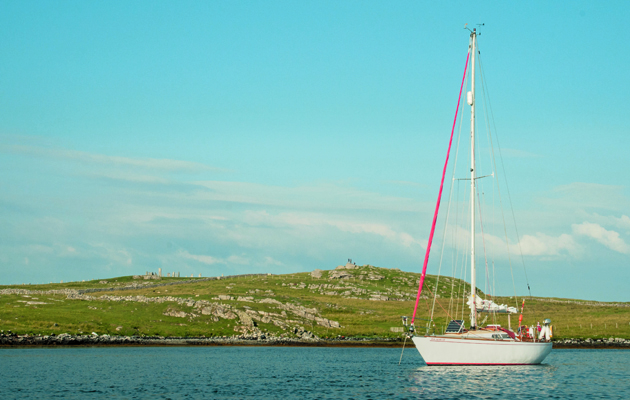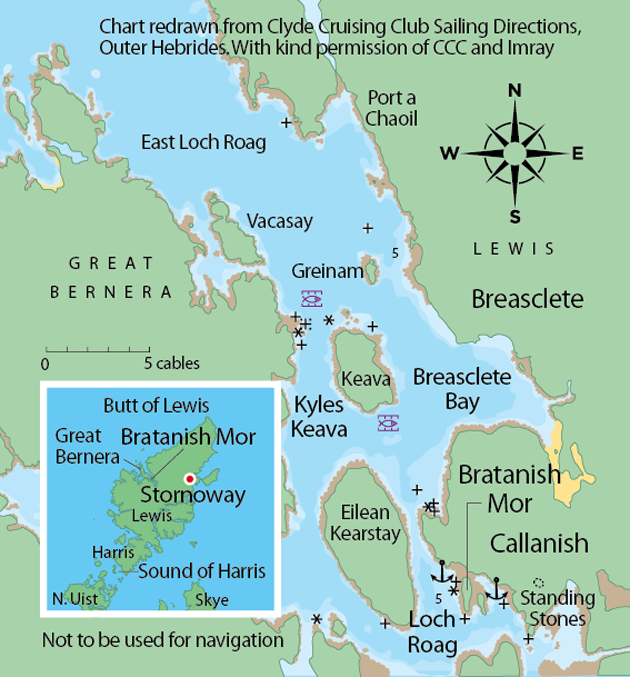The passage to this inland anchorage of Bratanish Mor may be challenging but the rewards will be worthwhile, says Miranda Delmar-Morgan
Nothing had quite prepared me for the stunning beauty of the anchorage at Bratanish Mor beneath the standing stones at Callanish (Calanais in Gaelic) in the Outer Hebrides. These Lewisian gneiss stones are ancient monuments (approximately 3,000BC) and under the protection and management of Historic Scotland.
Bratanish Mor lies at the southeastern end of East Loch Roag on the west coast of Lewis. To get there you will either have to pass though the Sound of Harris and work your way northwards or go north and westabout from Stornoway to round the Butt of Lewis. This headland has a fearsome reputation, and the Clyde Cruising Club’s Outer Hebrides Sailing Directions warn against rounding it if there is any white water visible. The Atlantic swell and 4-5 knot Spring tides can make it lumpy even on the calmest of days. It was a model of good behaviour when my husband, Edward, and I rounded it last summer in our 34ft sloop Polar Bear, but this is apparently an exception.
‘The anchorage is so well tucked away that it will provide excellent shelter in most winds’
As you enter the loch you will pass Loch Carloway and can glimpse a partly restored Iron Age house, the Doune Broch at Dun Carloway, on a hill above you.
You then wind your way ever inwards, deeper into the crevices of Lewis, passing to the north of Vacasay and Great Bernera. The island of Keava can be left to port or starboard, though the northern tip of it has several offlying unmarked rocks and care is needed. There are also two fish farms, one to the NW and one to the SE of Keava. The narrow gap between Eilean Kearstay and the Isle of Lewis has 2m at CD, and an unmarked rock at the NE end of the channel.
Allow sufficient room to clear a rock at the southern tip of Bratanish Mor, clear a small adjacent island then head north to round up and anchor beneath the standing stones in good holding in about 4m. Low-level overhead cables, 3.8m, restrict any passage further to the SE. The anchorage is five miles inland and so well tucked away that it will provide excellent shelter in most winds, with perhaps the exception of south to southeasterlies. However, Loch Roag has many alternative nooks and crannies that would provide alternative shelter if any significant wind created uncomfortable conditions here.
Silhouetted on the skyline above you are the slender and elegant stones. Below them natural semi-circles of stones sweep downwards to greet you on the shoreline. Having beached the dinghy and clambered up the grassy slopes amongst the sheep you are rewarded with a view of slopes, rolling hills and the bigger peaks of western Lewis in the distance. There is an excellent visitors’ centre, which has a coffee shop, and a crofting village further up the road.
The occasional small parties of people turned up and they drifted about quietly, seemingly respectful of the natural beauty of the place. After sunset they disappeared, leaving us with the place and silence all to ourselves. It was a magical visit and unexpectedly beautiful.
Discover the best historic sailing sites in the British Isles





